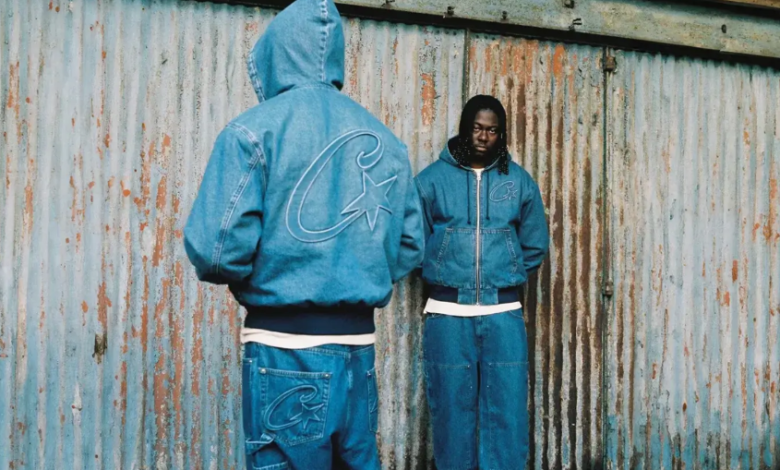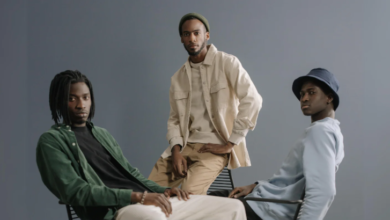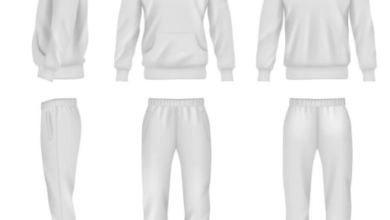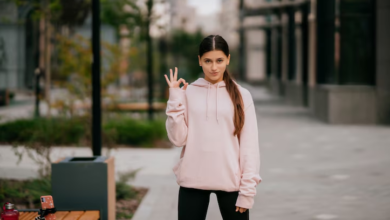You Can’t Fake What Cortiez Built From the Ground Up

There’s a difference between building something from scratch and buying your way into culture. You can smell the fakes from a mile away. The ones who pour money into campaigns, influencers, and paid hype, hoping to fabricate something that looks like it belongs. But Cortiez? It did it differently. It was born in silence. In the corners. In alleyways and across walls where the real ones live. There were no shortcuts. And there was no permission asked. You can’t fake roots like that.
How Cortiez Created Culture Without Copying the World Around It
The interesting thing about Cortiez is that it never followed. It never tried to adjust itself to fit into the fashion mold already carved out by bigger names with decades of marketing power behind them. Instead, it rejected that path altogether. It didn’t take from other streetwear brands. It didn’t recycle concepts or logos. It created its language. It’s rhythm. The streets taught Cortiez how to speak, and it listened. It became fluent in rebellion and authenticity, and that’s what resonated with those who were sick of fashion pretending to be culture.
While others studied charts and trends, Cortiez studied people. The energy of young crowds in London. The way kids wore their clothes oversized, layered, mismatched—because that’s what freedom looked like. The brand turned all of that into design, but without shouting about it. It never needed a campaign to explain its relevance. The people wearing it told the story better than any marketing deck ever could.
When Wearing the Crown Became a Statement, Not a Trend
You started seeing that crown logo in places where brands usually don’t make it. Underground music venues. Late-night bus stops. Street corners after games. And then you realized—Cortiez wasn’t following fashion cycles. It was following feeling. The garments weren’t flashy, but they had presence. When someone had a piece on, it meant something.
The thing is, the logo wasn’t about royalty or ego. It was about independence. A kind of raw, built-from-dust energy that people connected with. And the way drops were done—location-based, cryptic, unadvertised—it made each purchase feel earned. You weren’t just buying clothes. You were participating in something that refused to sell out. That kind of loyalty? You can’t fake that either.
What Cortiez Represents in Today’s Overcrowded Fashion Landscape
In a time where everyone is trying to get your attention, Cortiez does the opposite. It stays quiet. It doesn’t flood your feed. It doesn’t scream “limited edition” on every post. It lets the pieces speak for themselves. And when you wear them, it’s different. You feel it.
Cortiez represents resistance. Against overpriced drops with no meaning. Against designers who don’t know the culture they’re trying to sell to. Against labels that are all aesthetic but no backbone. It brings something rare into the streetwear conversation—honesty. Not every brand has that. Not every brand even wants it. But for Cortiez, that’s the only way it was ever going to be.
See also: Stussy Store – Your One-Stop Destination for Streetwear Fashion
Function First: Why the Cortiez Cargos Stand on Their Own
Now, let’s talk about one of the most defining pieces in the line—the Cortiez Cargos. These aren’t just another item to match the aesthetic. They’re designed with real movement in mind. From the material down to the structure, they’re built to handle the city. Walk through Camden, cycle through Paris, hop fences in Brixton—these cargos don’t just survive, they move with you.
But it’s more than the fabric. It’s the way they’re cut. The wide legs give you room. The deep pockets that aren’t just for show. The fit that doesn’t try to squeeze you into anything. Cortiez cargos are about freedom. They’re urban-ready and shaped for people who live outside of curated Instagram grids. You wear these because you need function and grit, not because you want a trend.
A Global Takeover That Didn’t Happen Overnight
What people don’t see is the grind that led up to now. The years when Cortiez wasn’t getting any press. When no major stores wanted to stock the line. When every single piece had to fight its way into closets across the UK. But it kept going. And slowly, it started showing up in the right places. On the backs of people who matter. On stages. In videos. At protests. At late-night cyphers. No marketing firm could orchestrate that kind of credibility. It’s grown, yes. But not in the artificial way most brands do. The growth came from below, from loyalty. And from the people who kept showing up.
And now? Cortiez is global. But it never abandoned its roots. Whether it’s worn in New York, Lagos, or Berlin, it still feels like London. Still feels like grime. Still feels like youth energy bottled up and woven into cotton.
Why Real Recognizes Real
Have you ever put on a hoodie and it just fits your mood? That’s what Cortiez does. It doesn’t try to be something it’s not. And when you wear it, you stop trying too. You’re not flexing for the algorithm. You’re not chasing likes. You’re repping a mindset. You’re claiming your space.
And the funny thing? The people who don’t know the brand—they ask. Not because it’s shiny. But because it has energy. The energy of not giving in. Of not compromising. And that’s what people respect.
The Movement Doesn’t Need a Mascot
There’s no face of Cortiez. That’s the point. The face is you. The crew. The ones wearing it in everyday life. No celebrity spokesperson. No need to see it on a red carpet. You’re the billboard. The street is the runway.
This brand never begged to be in fashion week. It’s been too busy being in real life.





